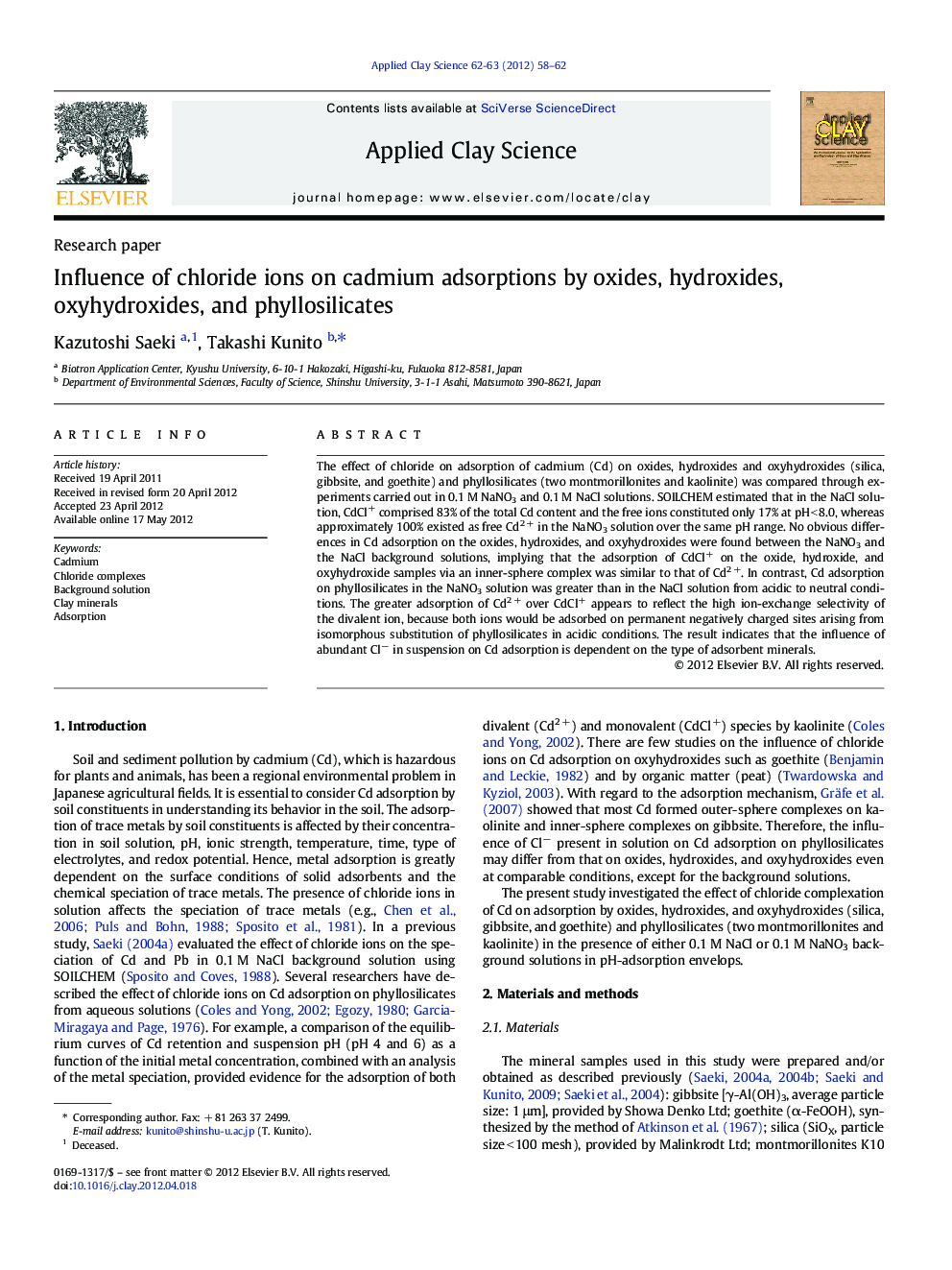| Article ID | Journal | Published Year | Pages | File Type |
|---|---|---|---|---|
| 1695236 | Applied Clay Science | 2012 | 5 Pages |
The effect of chloride on adsorption of cadmium (Cd) on oxides, hydroxides and oxyhydroxides (silica, gibbsite, and goethite) and phyllosilicates (two montmorillonites and kaolinite) was compared through experiments carried out in 0.1 M NaNO3 and 0.1 M NaCl solutions. SOILCHEM estimated that in the NaCl solution, CdCl+ comprised 83% of the total Cd content and the free ions constituted only 17% at pH < 8.0, whereas approximately 100% existed as free Cd2 + in the NaNO3 solution over the same pH range. No obvious differences in Cd adsorption on the oxides, hydroxides, and oxyhydroxides were found between the NaNO3 and the NaCl background solutions, implying that the adsorption of CdCl+ on the oxide, hydroxide, and oxyhydroxide samples via an inner-sphere complex was similar to that of Cd2 +. In contrast, Cd adsorption on phyllosilicates in the NaNO3 solution was greater than in the NaCl solution from acidic to neutral conditions. The greater adsorption of Cd2 + over CdCl+ appears to reflect the high ion-exchange selectivity of the divalent ion, because both ions would be adsorbed on permanent negatively charged sites arising from isomorphous substitution of phyllosilicates in acidic conditions. The result indicates that the influence of abundant Cl− in suspension on Cd adsorption is dependent on the type of adsorbent minerals.
► The effect of Cl- on Cd adsorption on oxides was compared to that on phyllosilicates. ► Cd adsorption on the oxides was not different between NaNO3 and NaCl solutions. ► Cd adsorption on phyllosilicates in NaNO3 solution was greater than in NaCl solution.
